
Please Note: Firefox and some other Search Engines may not be suitable
Use Google Chrome for this Web Page to load perfectly!
Please
Note: All ssMaritime and other related maritime sites are
100% non-commercial and privately owned, thus ssmaritime is NOT
associated with any shipping company or any other organisation!
Although the author has worked and been involved in the passenger
shipping industry for well over 60 years, but due to his old age
and poor health, he was forced to retire. Yet, he has completed
well over 1,365 Classic Liners, Passenger-Cargo Liners as well as
humble converted C3 converted Migrant Liners, which has
transported countless thousands folk to the new world, as well on
vacations’. I trust the features online will continue to
provide Classic Liner and Ship enthusiasts both the information
they are seeking, but more so provide a great deal of pleasure
and relive many happy memories!
Please Note: Postcards, photographs
& other images are either from the author’s private
collection, unless stated otherwise. A special thank you to
ssmaritime supporters
With
Maritime Historian, Cruise‘n’Ship Reviewer, Author and Lecturer
Commenced
in the Passenger Shipping & Cruise Industry in 1960
Lloyd
Triestino Line
Page
two
The
Family Shelling story
Sailing
on Toscana’s Maiden Voyage from
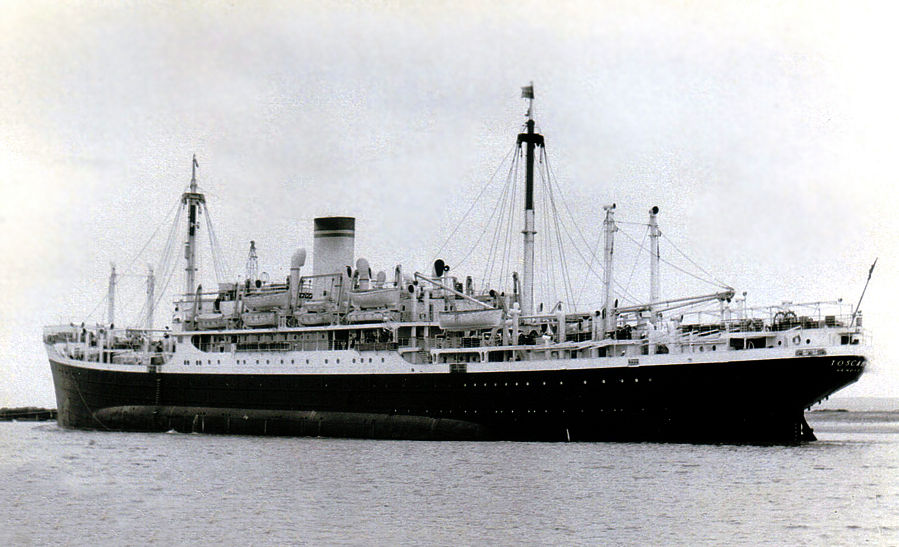
Photograph
above is by
Please
Note: All Photographs and Images shown below are by, or provided
by
On February 18, 2014 I received an email from
He wrote “I had heard stories of my
parent’s trip from
Attached to the email was a long and a neatly
hand written story by Mrs Shelling about her and her late husband
and 14 month baby girl Anne experiences on the ship, and believe
me it makes for amazing reading, for Mabel Shelling tells it just
as it was and she certainly does not dress it up!
I trust that you will enjoy reading this tale,
of a mother who did find her voyage with her little girl in a
large dormitory difficult, and I know that so many women had to
suffer in the same way on so many other ships, for men and women
were separated as soon as they were boarded, and usually they
were not told until they were on the ship, thus it came as quite
a shock!
I
hereby wish to thank Associate Professor Andrew Shelling, the son
of the late Willem (later better known as William) and the now
wonderful 88-year-old Mrs. Mabel Shelling who is the heart of
this feature, more-so than the ship. The truth is, it is dear
Mabel who is telling her story of her voyage and it is one that
should be heard for migrating with a little 14 month little girl
is not that easy, especially when you discover that you are in on
of the holds of the ship that have been hastily converted into
dormitories, with women on one side and the men on the other.
We need to remember, that she had just completed her services from Africa, and now she was about to commence her maiden voyage for her new service to Australia, sailing from Genoa, via Naples, Port Said, Suez, Aden, Colombo, Fremantle (Perth), Melbourne to Sydney and return.
Reuben
Goossens.
Mr William Shelling was born as Willem Schellingerhout
on May 28, 1924 in Zwijndrect, the
The above information was provided by the son; Professor
Andrew Shelling.
I was just 22 years old at the time that we
sailed on the
Below is the brochure that we had been provided, it covered the Toscana nicely and it looked quite nice, but it obviously it did not cover the section that we were travelling in, for the cabins it showed, that seemed to be the bottom class, being the third class looked so nice! It also contained the complete schedule of our voyage. The brochure is followed by our Passage Ticket, that was rewritten just a month before our departure and we were given new berths.
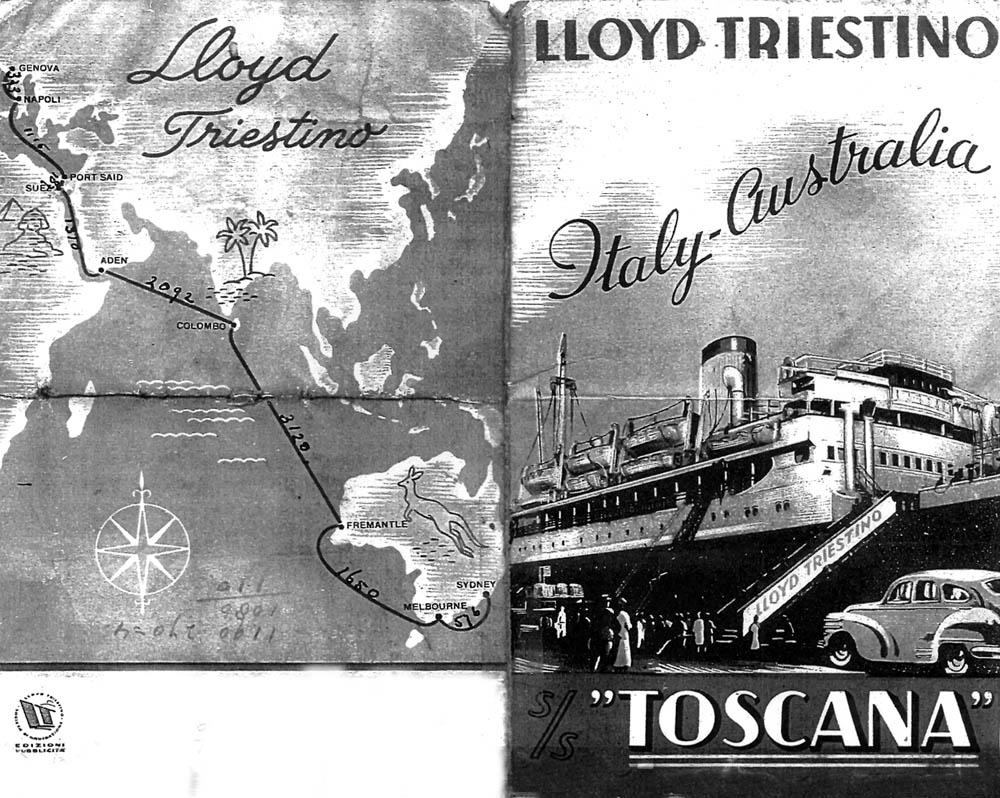
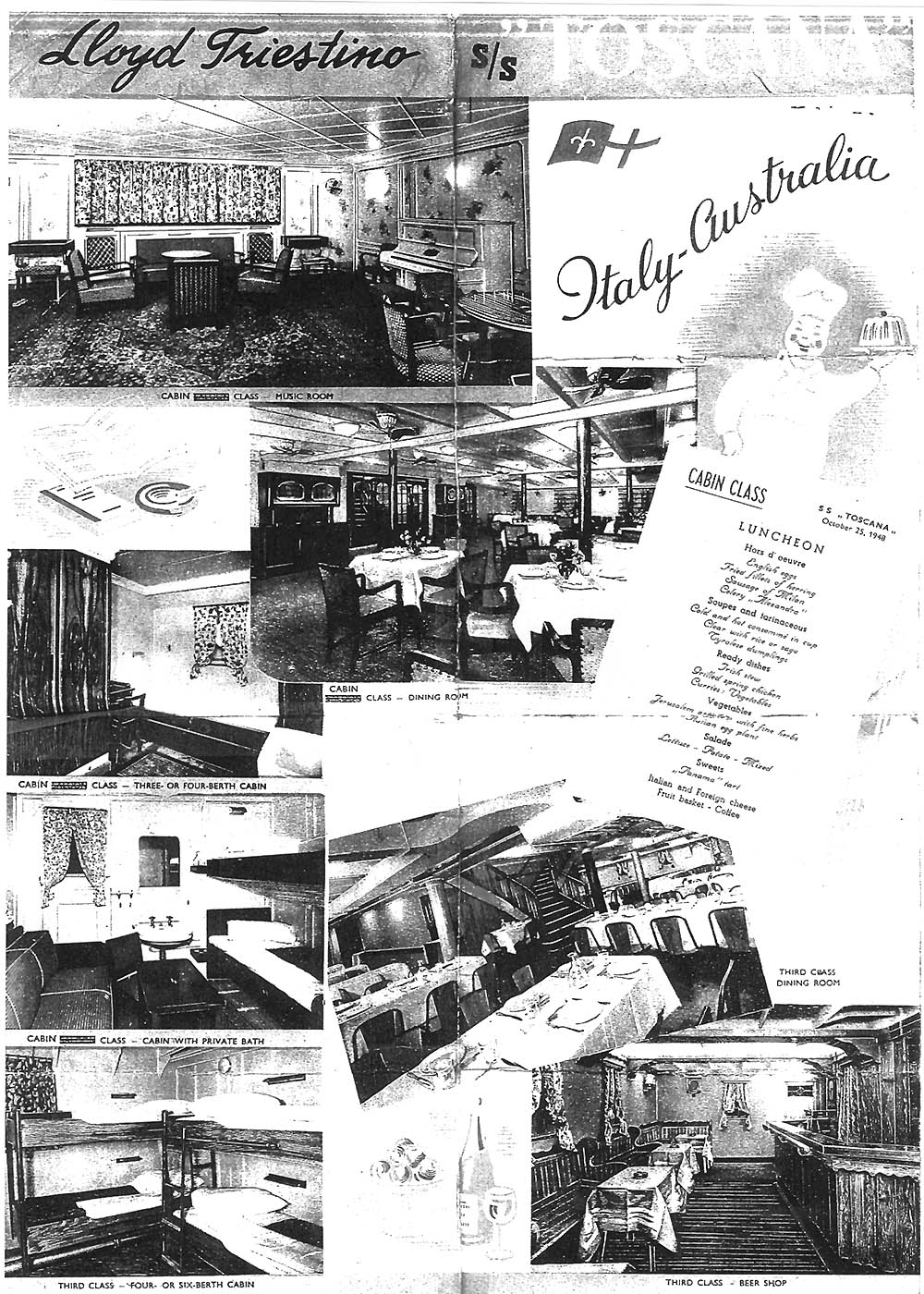
Cabin Class
was more like First Class, and we sort of shared the Third Class
facilities, but it was very crowded, thus
we spent
more time out on the decks, as cabin passengers who had paid
more, did not like the dormitory people much
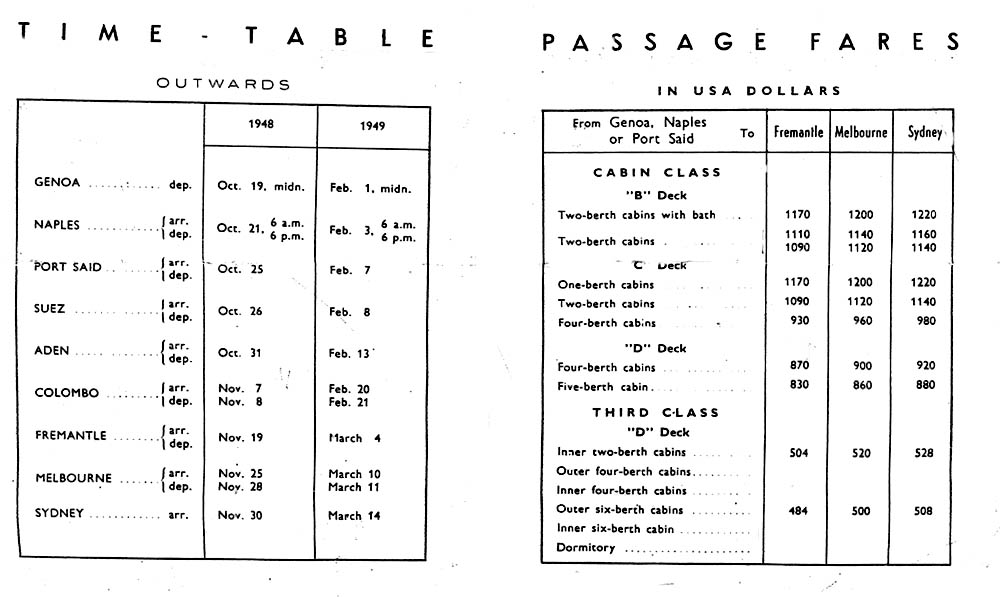
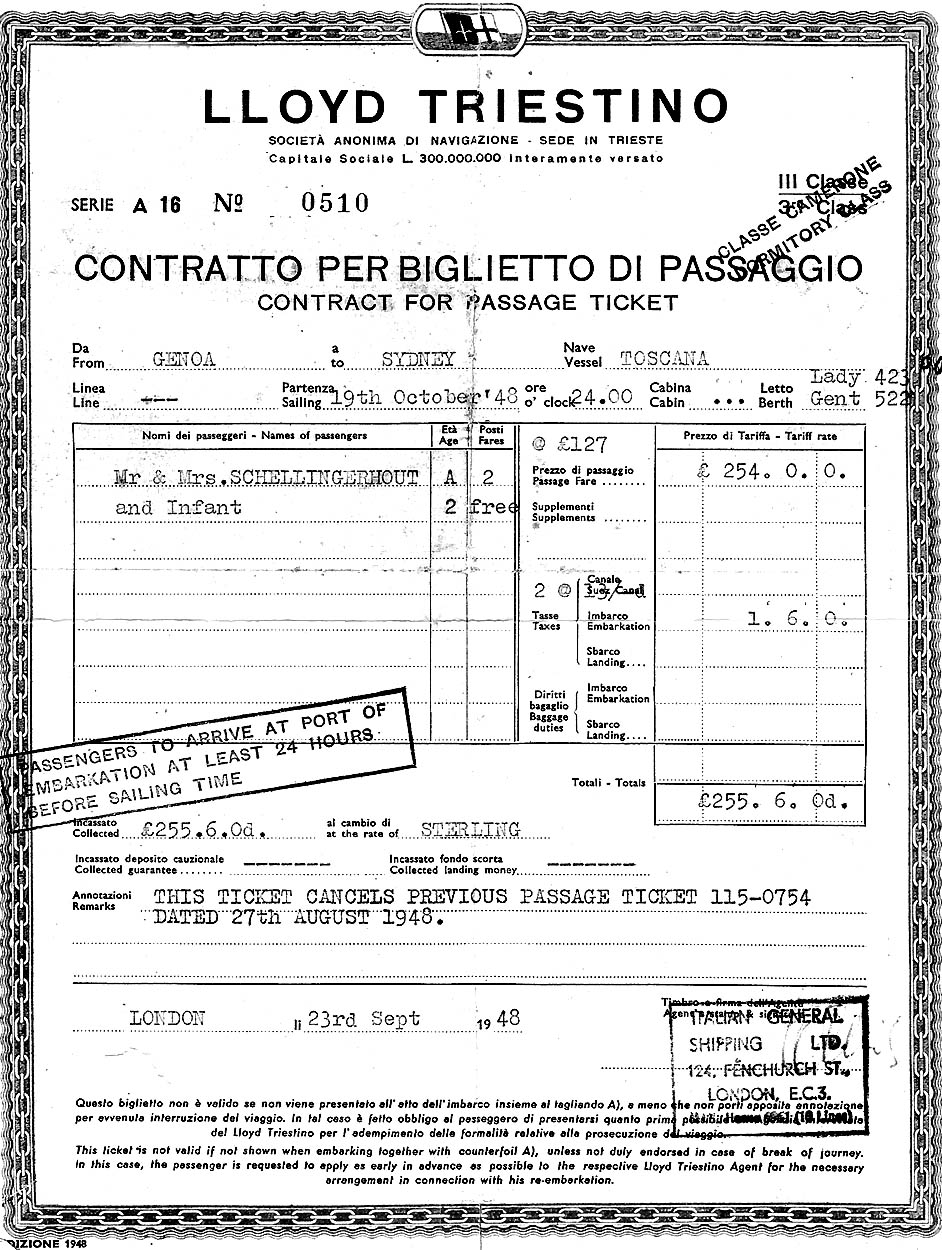
We travelled to Newhaven in the south of
Considering we had our 14-month daughter with
us, this long journey was certainly not easy, for the train was
packed to capacity, and worse still there were no sleeping berths
available. In addition the train was frequently stopped, in order
to check passports and identity papers.
Eventually we arrived at
Authors Note: A two-berth cabin would
have cost £185.25 per adult, the baby is free, thus a total of
£370.00. Thus, this is a good £116.50 more that what was paid,
excluding taxes, and remember that was back in 1948, on which the
conversion rates between the US$ and the Sterling £ Pound has
been based, and that was a great deal of money at that time!
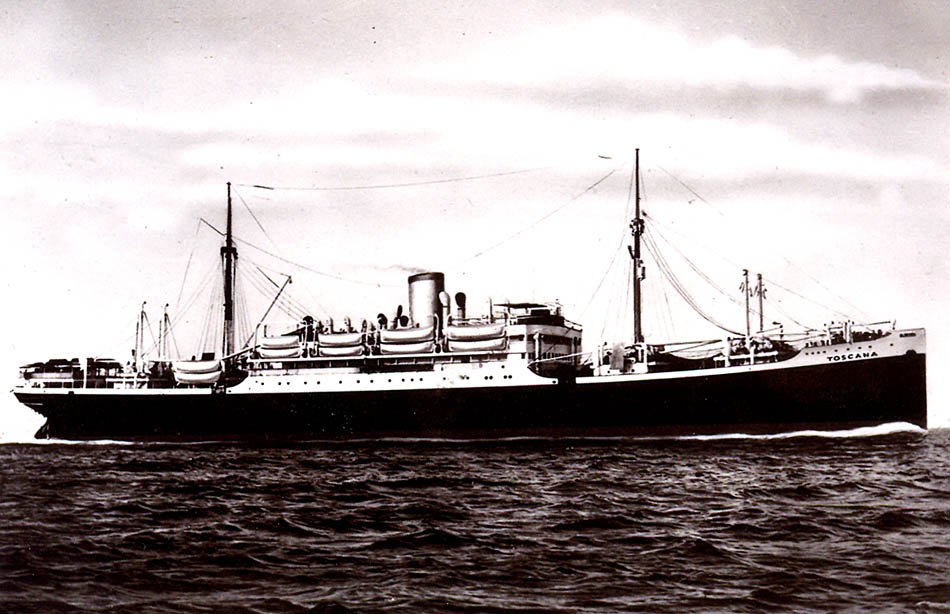
We
purchased this postcard of the
The dormitories are located in what were the
ships holds both forwards and aft, and they were very basic. Beds
were placed in rows of four and they were very narrow bunks that
were stacked. There was only a metal pipe separating you from a
complete stranger. I had to have my little girl sleeping with me,
as it was unsafe for her to be in her carrycot on the concrete
floor, and that was because of the rats. And I do mean - huge
rats. The other women insisted on having the lights on all night,
because of the rats. Often there were screams during the night,
when a rat was spotted! A number of complaints were made over the
six weeks, while we were on the ship, but all that happened was
that a steward would come round from time to time and he sprayed
some fly spray, fine for flies and mosquitoes, but what good was
this going to do with our rats?
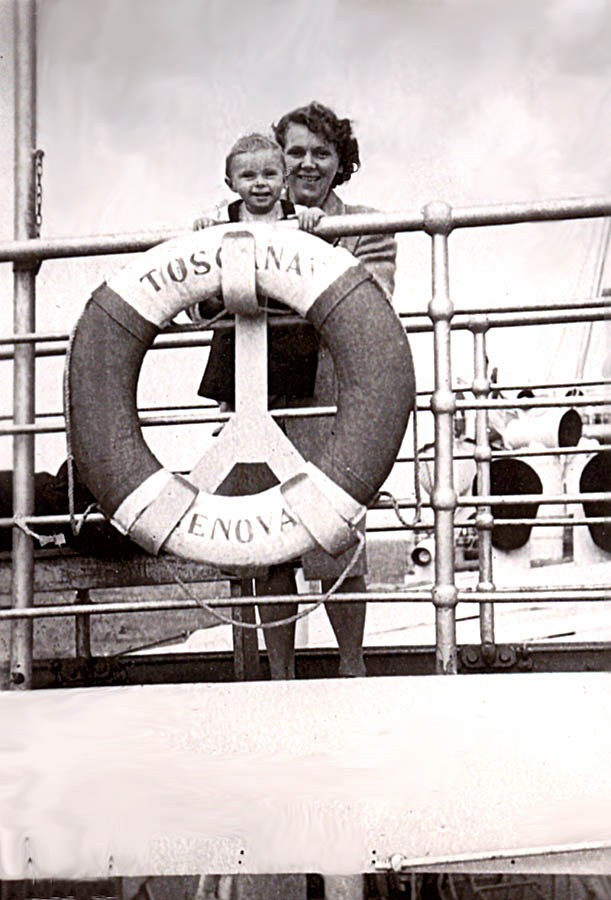
When we were in port,
We were warned not to drink the water, for the
water too dangerous to drink! Only safe drink was to be found on
the tables and that was some horrible cheap wine. To have a cup
of tea or a cold drink, you had to go pay for it at the
Cafeteria. Personally, I used to go down to the engine room,
every day, in order to get some boiled water for my little
darling girl.
Most of the babies onboard were so ill, with
diarrhoea, including my darling, even when I had been so very,
very careful. There were about 80 English people on the ship and
the rest were people from a good number of nationalities,
including Italians of course! For some reason, the English and
Dutch babies seemed to get sick before the others and they were
so much worse. Is it possible that we live in more hygienic
conditions than other countries?
One lovely healthy English baby boy, just
six-month-old tragically died and he was the first child of a
professional couple from the south of
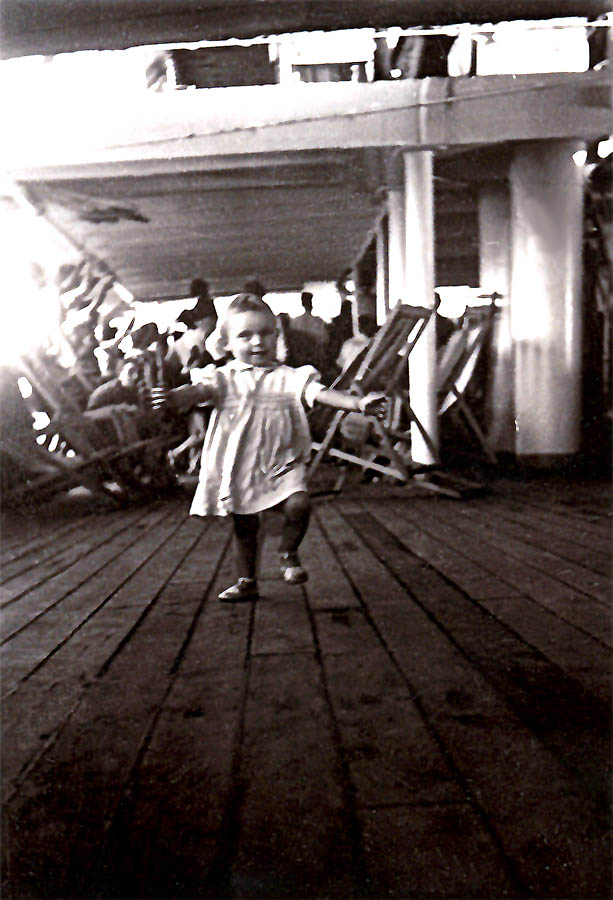
Little
Our little girl
When we arrived at
Not too long after we had arrived in
Andrew was born on January 16, 1963 but in
total there were eight children. Andrew tells me that he visited
his fathers childhood home, “Zwijndrect a few years ago and
found the house that he lived in. It seems a far different place
to what I imagined, and where they eventually ended up living, in
rural Nelson.
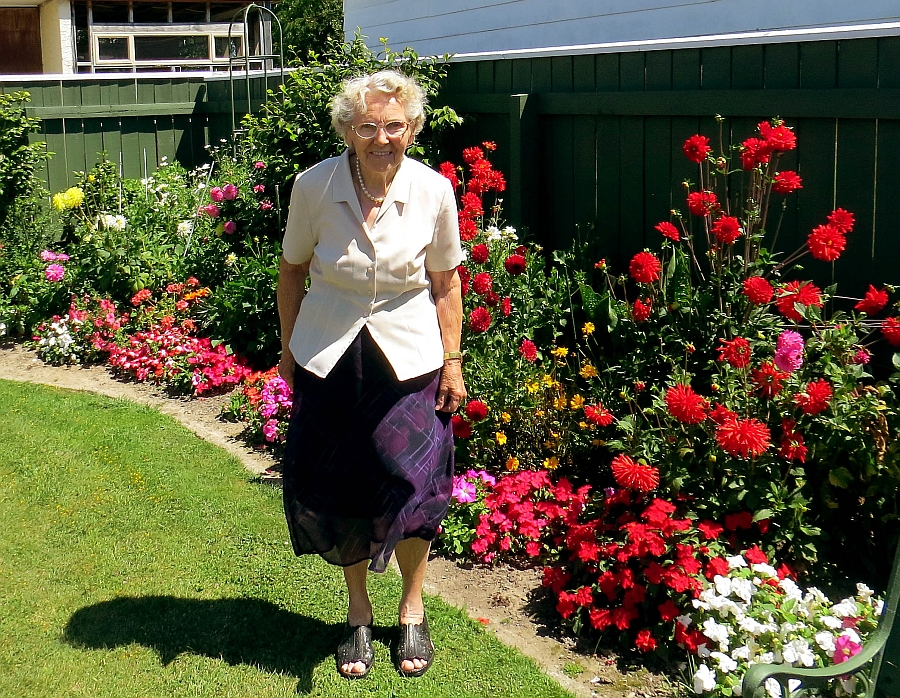
Page One
S.S. Toscana History.
Page Two
Family Shelling sailed on Toscana’s maiden voyage to
Page Three
*************************************
Other
MS Australia and Oceania & Neptunia
TN
Galileo & Marconi & MV Africa & Europa
*************************
“Blue Water Liners sailing to the distant shores.
I watched them come, I watched them go and I watched them die.”
Featuring over 1,365 Classic Passenger Liners, Passenger-Cargo Liners & Classic Cruise Ships!
Or ENTER HERE
For interest: Sadly an email service to
ssMaritime is no longer available, due to the author’s old
age and chronic illness as well as being disabled, etc. In the
past ssMaritime received well over 120 emails per day, but
*************************
ssMaritime.com
& ssMaritime.net
Where the ships of the past make history & the 1914 built M.S. Doulos Story.
The Author has been in Passenger Shipping & the Cruise Industry for well over 60 years
In addition he was the founder of “Save the Classic Liners Campaign” in 1990.
Please
Note: ssmaritime and associated sites are 100% non-commercial
and the author seeks no funding or favours of any shape
or form, never have and never will!
Photographs
on ssmaritime and associate pages are by; the author or
from the author’s private collection. In addition there are
some images that have been provided by Shipping Companies and
private photographers or collectors. Credit is given to all
contributors. However, there are some photographs provided to me
without details regarding the photographer/owner concerned.
This
notice covers all pages; although, and I have done my
best to ensure that all photographs are duly credited and
that this notice is displaced on each page, that is, when a page
is updated!
ssMaritime is
owned & © Copyright by